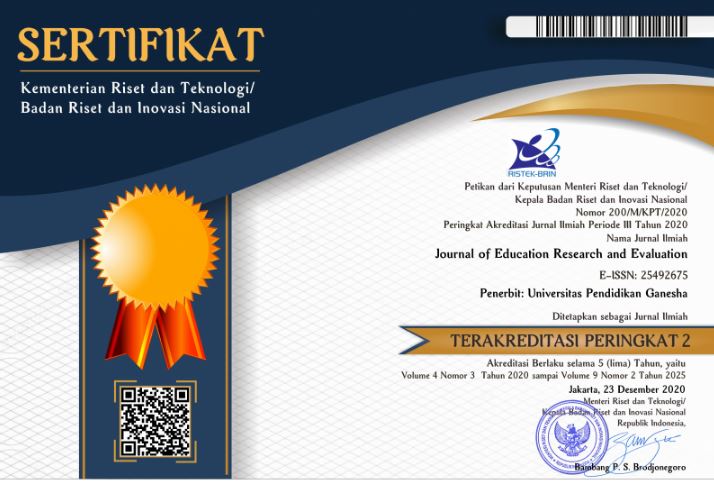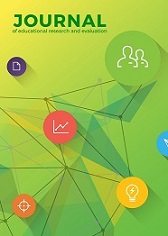Implementing Mixed Method of Peer Teaching and Problem Solving on Undergraduate Students
DOI:
https://doi.org/10.23887/jere.v1i1.9843Keywords:
Classroom Action Research, Mixed method, Peer Teaching, Problem Solving MethodAbstract
This study examined the application of problem solving method combined with student centered learning (peer teaching) method as a mixed method to improve student’s passing level of financial management course. The object of this study was the 84 students of financial management course separated within two classes during the odd semester period 2014/2015, July until December 2015 with fourteen meeting courses. Data used to measure the results of the application is mid and final exam scores of both classes. Researcher used observation, interview and documentation as data collect technique also triangulation technique as data validity check. This study used problem solving method combined with student centered learning (peer teaching) method as a mixed method which included into the Classroom Action Research. The final results show the increase in class A passing level is 17%. Class B passing level increased 3%. From the research we also know that in practical use of mixed method learning, leader’s quality and conducive learning environment are influencing factors in improving student’s learning performance. While the result confirms that mixed method improving learning performance, this study also founds additional factors that might be considerably affecting the results of learning performance when implementing the mixed method.
References
Anggorowati, N. P. 2011. Penerapan Model Pembelajaran Tutor Sebaya Pada Mata Pelajaran Sosiologi. Komunitas: International Journal of Indonesian Society and Culture, 3(1). Retrieved from http://journal.unnes.ac.id/artikel_nju/komunitas/2303
Chou, S.-W. and Liu, C.-H. 2005. Learning effectiveness in a Web-based virtual learning environment: a learner control perspective. Journal of Computer Assisted Learning, 21, 65–76. doi:10.1111/j.1365-2729.2005.00114.x
El-Sayed, S. H. 2013. Effect of peer teaching on the performance of undergraduate nursing students enrolled in nursing administration course. Journal of Nursing Education and Practice, 3(9), 156. doi:10.5430/jnep.v3n9p156
Hwang, G. J., Wu, P. H., & Chen, C. C. 2012. An online game approach for improving students’ learning performance in web-based problem-solving activities. Computers & Education, 59(4), 1246-1256. doi:10.1016/j.compedu.2012.05.009
Ismail, S., & Atan, A. 2011. Aplikasi pendekatan penyelesaian masalah dalam pengajaran mata pelajaran Teknikal dan Vokasional di Fakulti Pendidikan UTM. Journal of Educational Psychology and Counseling, 2(1), 113-144. Retrieved from http://core.ac.uk/
Kemmis, Stephen., Robin McTaggart. 1988. (Eds.). The Action Research Planner. Australia: Deakin University Press.
Moeloeng, Lexy J. 2002. Metodologi Penelitian Kualitatif. Bandung: PT Remaja Rosdakarya.
Soedarsono, FX. 2001. Aplikasi Penelitian Tindakan Kelas. Jakarta: PAU-PPAI Universitas Terbuka.
Downloads
Published
How to Cite
Issue
Section
License
Authors who publish with the Journal of Evaluation and Research in Education (JERE) agree to the following terms:
- Authors retain copyright and grant the journal the right of first publication with the work simultaneously licensed under a Creative Commons Attribution License (CC BY-SA 4.0) that allows others to share the work with an acknowledgment of the work's authorship and initial publication in this journal.
- Authors are able to enter into separate, additional contractual arrangements for the non-exclusive distribution of the journal's published version of the work (e.g., post it to an institutional repository or publish it in a book), with an acknowledgment of its initial publication in this journal.
- Authors are permitted and encouraged to post their work online (e.g., in institutional repositories or on their website) prior to and during the submission process, as it can lead to productive exchanges, as well as earlier and greater citation of published work. (See The Effect of Open Access)










